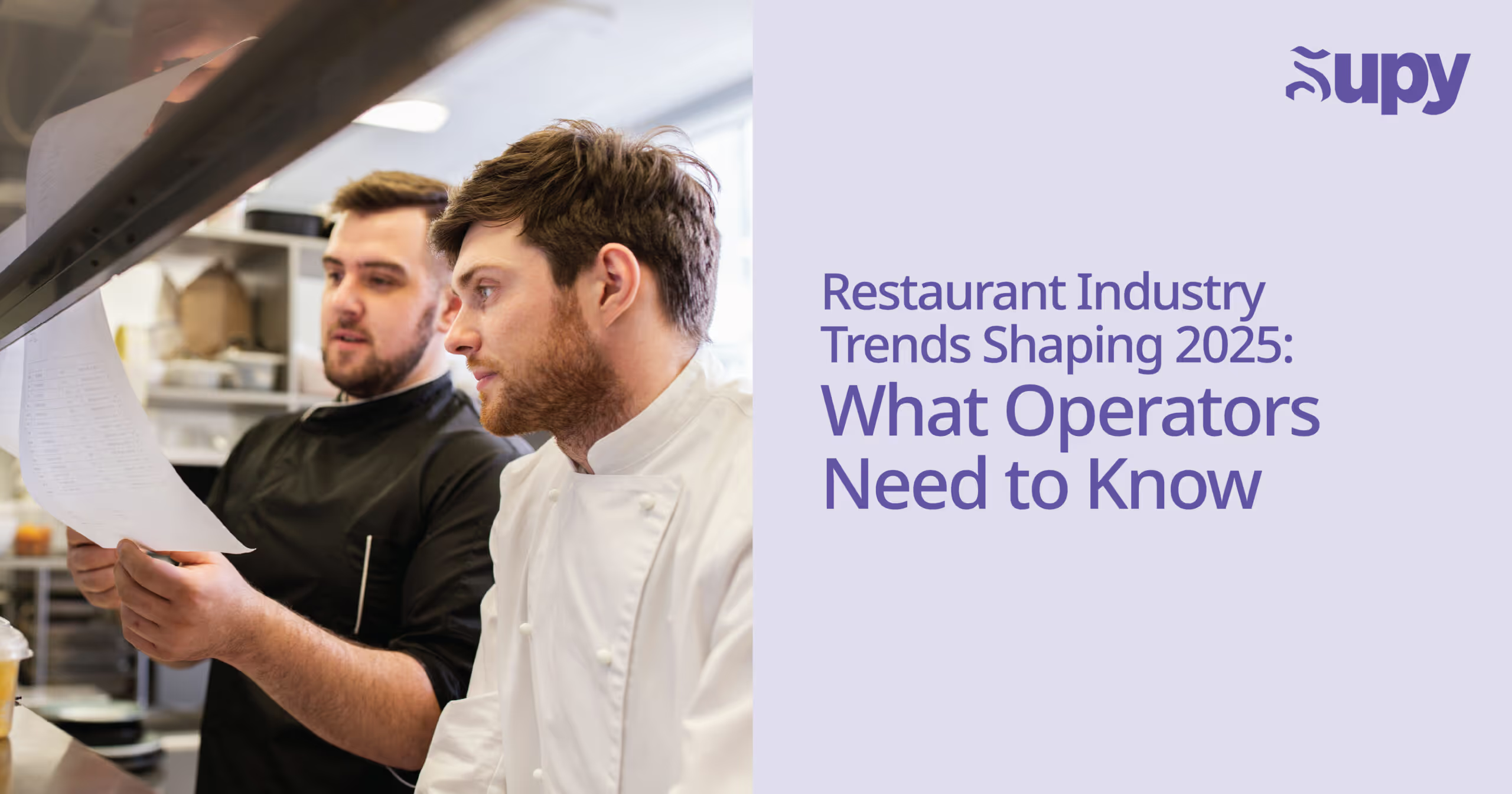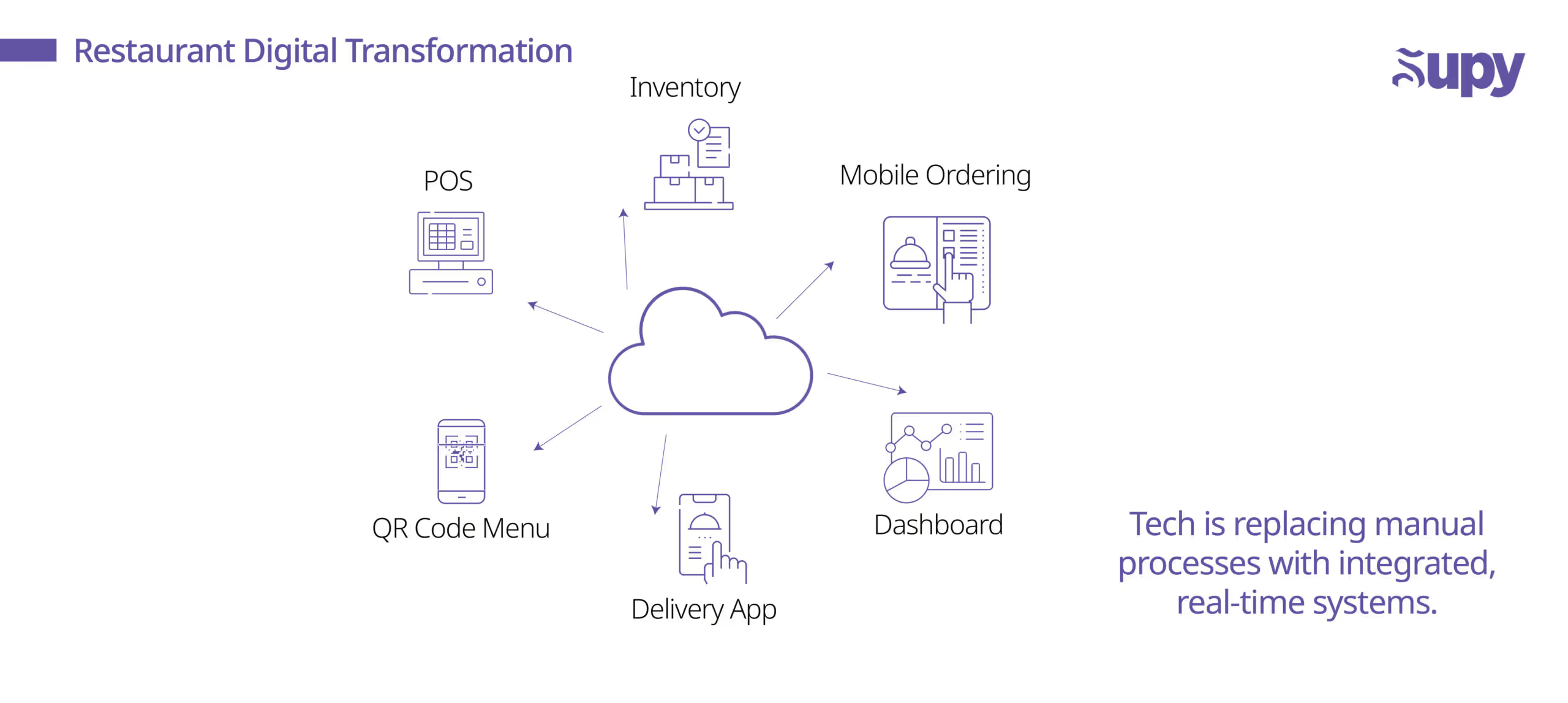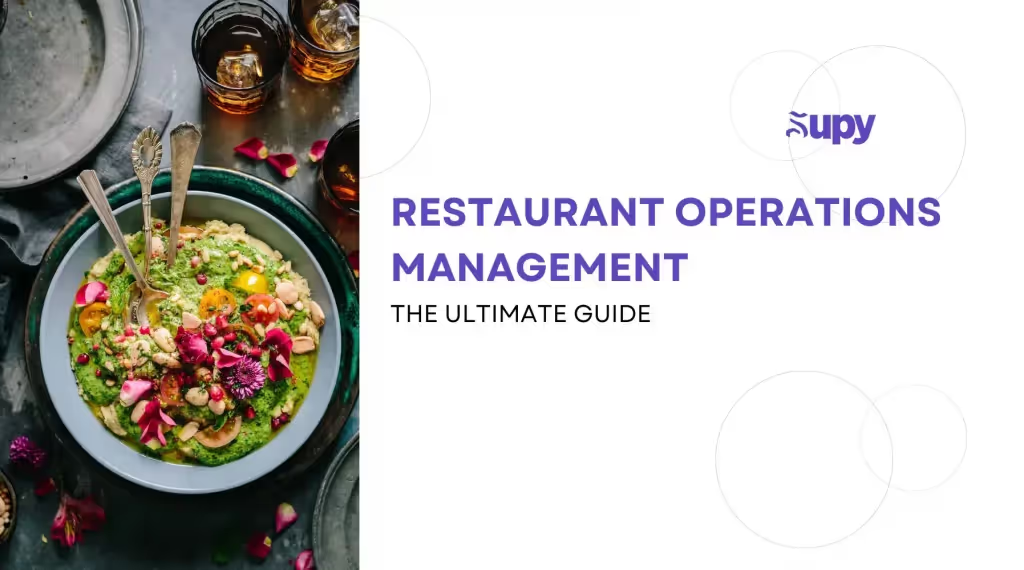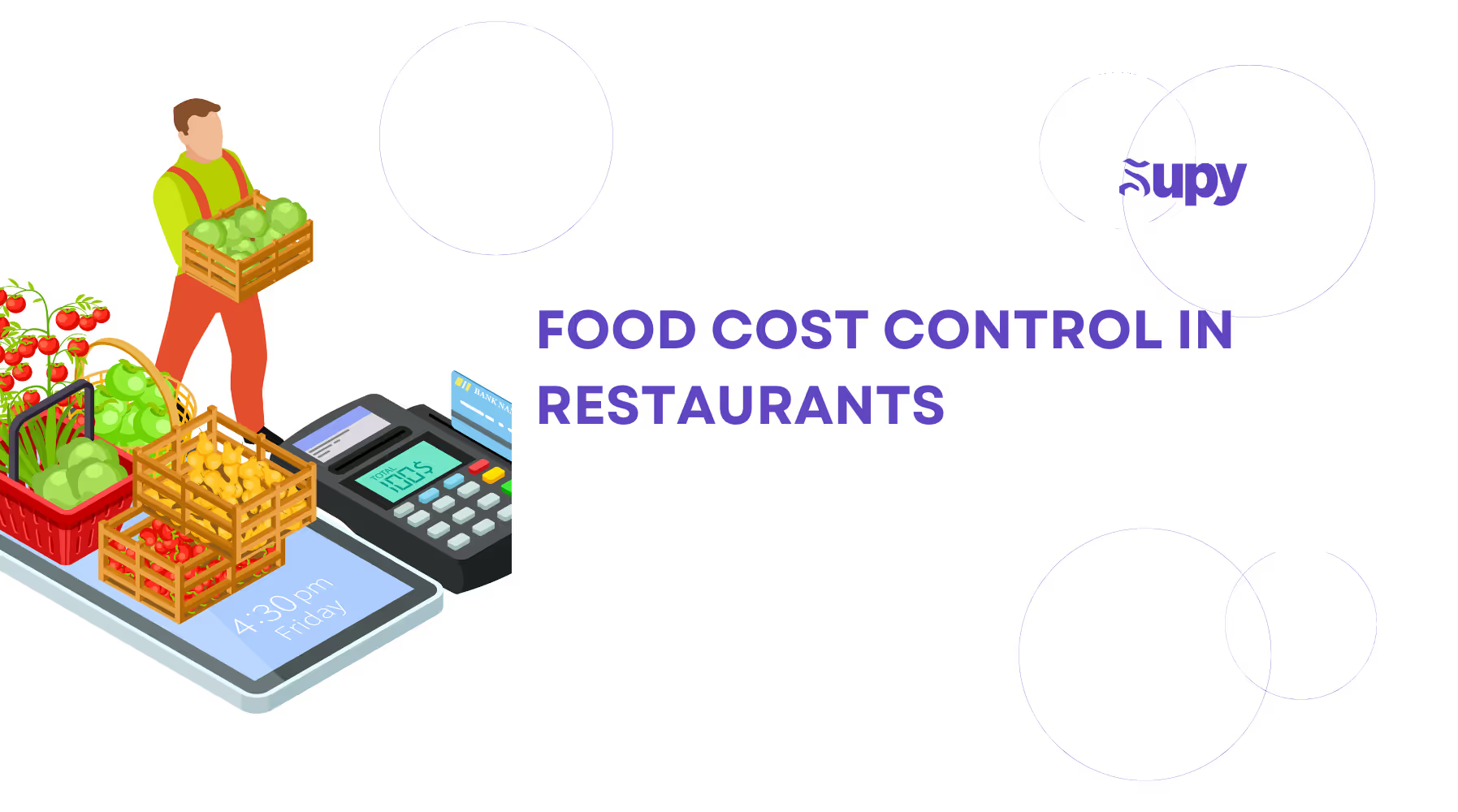Restaurant Industry Trends Shaping 2025: What Operators Need to Know

Introduction: A Turning Point for Foodservice
The restaurant industry of 2025 looks very different from the one many of us entered five or ten years ago. Inflation and supply chain disruptions have squeezed margins, labour shortages continue to bite and customers now expect seamless digital experiences alongside genuine hospitality. At the same time, back‑of‑house technology has evolved rapidly, giving operators new tools to control costs and delight guests. As multi‑site restaurateurs, understanding these trends isn’t just interesting, it’s essential for staying profitable and competitive.
Major Shifts Defining 2025

The biggest change is the acceleration of digital adoption. Pandemic‑era innovations such as contactless ordering and QR‑code menus are now standard, and operators are leveraging cloud‑based systems to centralise inventory, purchasing and recipe costing. Supy’s standard operating procedures emphasise daily recording of deliveries, wastage and transfers, along with weekly stock counts and recipe cost reviews. These routines are enabled by technology rather than clipboards.
Sustainability has shifted from a marketing buzzword to a core operational requirement. Guests are scrutinising where ingredients come from and how waste is managed. Awards like “Zero Food Waste to Landfill” show that hotels and restaurants are investing in waste reduction and circular initiatives. At the same time, the rise of ghost kitchens and delivery‑first concepts is reshaping real estate and staffing models. Many brands are adopting flexible formats, from fine dining flagships to fast casual offshoots, to capture different revenue streams.
The Push for Sustainability

Sustainability pressures are coming from consumers, regulators and staff. Operators are cutting single‑use plastics, sourcing locally and designing menus around seasonal produce. Digital systems make this easier: waste events are recorded daily and reviewed weekly, while supplier performance is monitored for issues like late deliveries or quality problems. Aggregated data helps chefs adjust prep levels, reducing both spoilage and over‑ordering. Composting, energy‑efficient equipment and partnerships with food rescue organisations are no longer optional, they’re part of the operating model.
AI’s Impact on Foodservice

Artificial intelligence is moving beyond hype and into everyday workflows. In 2025, the biggest AI impacts are in forecasting and automation. Platforms like Supy use historical sales data to predict future demand and set reorder points, reducing stockouts and waste. AI‑powered invoice scanning eliminates hours of manual entry, and smart dashboards highlight recipes that drift above their target food cost. Voice‑assisted stock counting and chatbot ordering are on the horizon, promising further productivity gains.
Adapting to Rising Supplier Costs

With supplier prices climbing, operators are forced to become more agile buyers. Weekly reviews of supplier invoices and performance allow teams to catch discrepancies early and renegotiate when necessary. Many are diversifying their supply base, sourcing from multiple vendors or participating in group purchasing. Menu engineering plays a role: recipes are continuously costed against current ingredient prices, and dishes that no longer meet margin targets are either re‑portioned or rotated out. Some brands are investing in vertical integration, securing their own commissary kitchens or farms to hedge against volatility.
Evolving Partnerships with Delivery Platforms
The relationship between restaurants and third‑party delivery aggregators is maturing. High commissions remain contentious, leading many operators to develop direct ordering channels through their own apps or websites. Centralised systems help manage multiple ordering streams without duplicating inventory data. Operators are also negotiating hybrid models , using aggregators for reach while encouraging repeat customers to use branded channels where margins are higher. Transparent data sharing on customer feedback and order mix is becoming a requirement rather than a nice‑to‑have.
Balancing Profitability and Guest Experience
Delivering a memorable experience while maintaining margins is a balancing act. Operators are leveraging data to make informed trade‑offs. Weekly stock counts and variance reports prevent over‑ordering, while live recipe costing ensures portions stay consistent and profitable. Savings from operational efficiency can be reinvested into staff training or quality ingredients. Technology also frees managers from the back office, allowing them to spend more time on the floor coaching teams and interacting with guests.
The Role of Central Kitchens and Commissaries
Central kitchens aren’t just for catering companies anymore. For multi‑site operators, commissaries provide economies of scale and consistent product quality. Bulk prep of sauces, marinades and semi‑finished goods reduces labour duplication and ensures every location starts with the same base product. Central kitchens also serve as R&D hubs, allowing chefs to test new dishes before rolling them out system‑wide. Coupled with integrated inventory systems, commissaries help operators track ingredient usage and cost across the entire network.
Menu Design and Engineering in 2025
Menus are becoming more dynamic and data‑driven. Consumer preferences continue to shift toward plant‑based options, globally inspired flavours and comfort food with a twist. Operators use sales mix and recipe cost reports to understand which items drive profit and adjust menus accordingly. Modular menu design , building dishes from a small set of core components , simplifies prep and allows for rapid seasonal rotations. At the same time, storytelling remains important: transparency about sourcing and preparation builds trust with guests.
Looking Ahead: Trends for the Next 2–3 Years
Several trends are set to gain momentum. Expect wider adoption of AI and automation in tasks like purchasing and prep scheduling. Sustainability will deepen, with more restaurants pursuing zero‑waste certifications and investing in renewable energy. Hybrid hospitality models , combining retail, grab‑and‑go and full‑service within one footprint, will emerge as landlords seek flexibility. Employee experience will be a competitive differentiator, with operators offering wellness benefits, flexible scheduling and career development to attract talent. Finally, expect regulation around data privacy and environmental impact to tighten, requiring robust compliance systems.
Positioning Your Organisation for Success
To thrive amid these shifts, operators should prioritise integration, agility and people. Consolidate disparate systems into a single back‑office platform to gain real‑time visibility over inventory, purchasing and sales. Establish routines for daily data capture and weekly cost reviews so that decisions are based on facts, not hunches. Invest in sustainable practices that reduce waste and appeal to eco‑conscious guests. Build direct digital channels to complement third‑party delivery and strengthen customer relationships. And remember that technology is only as good as the team using it , ongoing training and clear communication will ensure your people embrace change rather than resist it.
Conclusion
If you’re ready to future‑proof your operations, start by exploring resources on how to unify your back‑of‑house systems. Read our guide to digital inventory management for actionable tips, or book a demo with Supy to see how integrated purchasing, inventory and analytics can transform your business.







